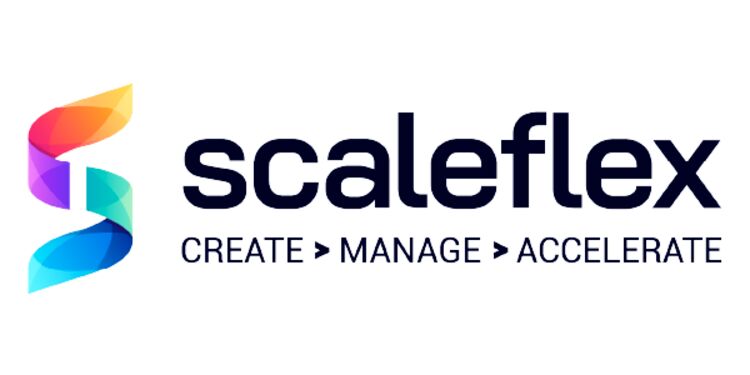Performance of you website: your images weigh heavily

In short
When it comes to website performance and optimization, the weight or size of images is what comes most naturally to mind: the lighter the images, the faster your pages will load, the better your users' browsing experience will be, and your search engine positioning with it. However, reducing image weight is only the tip of the iceberg. Our partner Scaleflex, which offers a specialized solution on the topic, has agreed to give us a few pointers to help you optimize your website's performance.
Choosing the best image formats for optimized websites
The ultimate optimization involves not only working on the weight of your images, but also adapting them to the size of your screen (mobile, iPad, computer, widescreen, etc.), your browser (Google, Safari etc.), or your screen resolution. For example, Google favors webp format, while Safari prefers avif. Another example: on the Mac, most screens are retina (pixel 2), so you need to deploy an image with twice the quality of a conventional screen to get the best rendering. Of course, this level of optimization would require an enormous amount of work, especially on enterprise CMS. That's why companies like Scaleflex have implemented solutions that push the optimization cursor to the maximum, in a completely automated way.
SeLoger.com was receiving so many images a day, many of them unoptimized, from individuals, that the pages were loading very slowly. They needed a magic bullet to optimize the images. That's how our dynamic image optimization tool, Cloudimage, came about.
Julien Noblet, Partner Manager SEMEA at Scaleflex
In many cases, we realize that images are not optimized, or not all of them, and that we can divide the overall weight of CMS images by 3.
Improving image loading on web pages
The classic operation of a web page is to load all content when the user accesses it. In many cases, however, users don't scroll down the page, or don't scroll all the way down. All images below the waterline therefore load “for nothing”, creating unnecessary latency when the page is opened.
Today, companies looking to improve website performance are opting for less monolithic loading methods. Instead of making the entire page available in its maximum definition, the CMS will, for example, load images as users navigate the page. This is the kind of optimization that has a real impact on loading times, with page loading times divided by 4 on average.
For a company that uses a lot of images, like Galeries Lafayette for example, a page can easily contain 200 products. That's 200 products loading at once on a non-optimized website, with a loading time of several seconds, which would greatly degrade the user experience. With Scaleflex, we have the option of loading images as the user scrolls down the page, but also of making them appear blurred. Initially, the images are blurred, with a more or less well-resolved image color, which will notably help gain several points on Google's Core Web Vitals grid.
Julien Noblet, Partner Manager SEMEA at Scaleflex
To improve page loading, you can also use a CDN. This technology caches images for even faster loading.
Core Web Vitals: improve your SEO performance by optimizing your images
SEO is one of the major challenges facing companies today. In today's highly competitive markets, the SEO battle is fought on all fronts.
Image optimization: between 15 and 25 points on Core Web Vitals
SEO is another key factor in improving page loading times. Optimizing your images can drastically improve your website's Google Core Web Vitals. It is estimated that between 15 and 25 points can be gained on these Core Web Vitals.
Tartine et Chocolat is a private sales site with a childcare focus. It's a fairly classic site from a technical point of view, designed with Shopify. With Scaleflex, we improved their Core Web Vitals by 22 points by optimizing their images.
Julien Noblet, Partner Manager SEMEA at Scaleflex
| Test my website's Core Web Vitals | Compare the Core Web Vitals of the top 10 CMS on the market |
|---|
Boost your SEO performance with Jahia CMSa
Jahia's partners provide you with some of the best tools to address every strategic aspect of SEO:
- Jahia provides the technical backbone, with Jahia sites achieving a score of 100 on Google's Core Web Vitals,
- Semji integrates directly into Jahia with a connector to save your SEO teams time, both in analyzing your content and in improving or producing it,
- Scaleflex or Keepeek allow you to optimize all your images, both to reduce page load times and to ensure that all your images have relevant titles and alternative texts.
- SiteImprove offers a global view of your SEO strategy, enabling you to control each of these components and achieve optimum performance.
 |
 |
|---|
Impact of image optimization on carbon footprint
Improving your website's performance by reducing image loading times has an impact not only on your users' browsing experience and your SEO, but also on your carbon footprint. Images can account for a significant proportion of your website's weight, and therefore all the data that needs to be stored and loaded for each user, which generates energy costs. Optimization is therefore also an environmental issue.
Michelin has managed to reduce its carbon footprint by a factor of 4 thanks to Scaleflex.
Julien Noblet, Partner Manager SEMEA at Scaleflex



